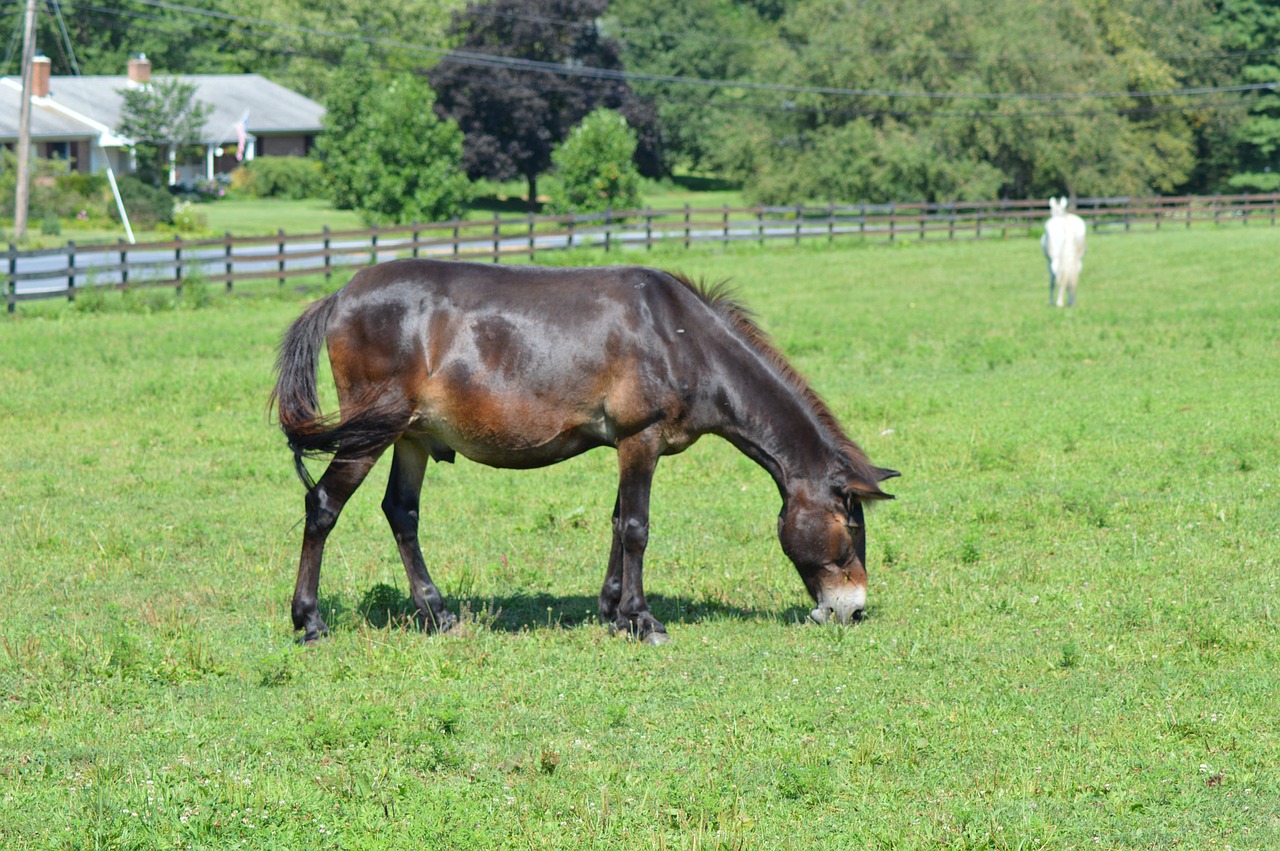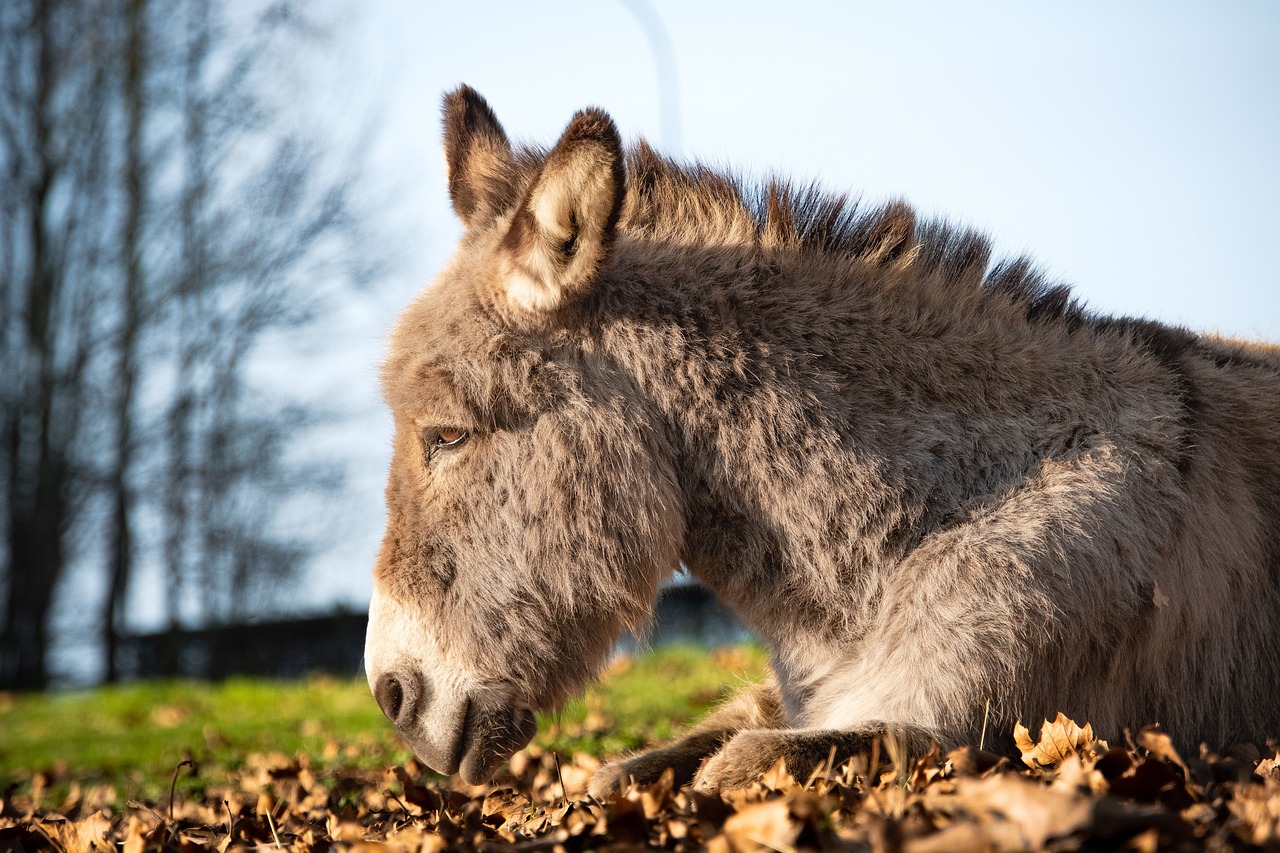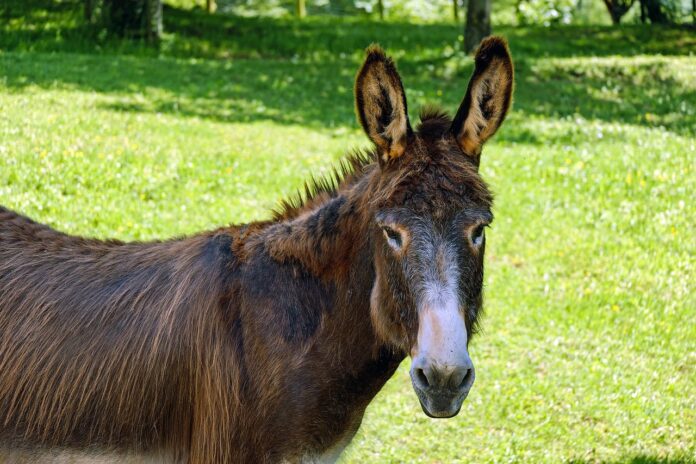The mule belongs to the equine family and shares many similarities with its close relatives—the horse and the donkey. A mule is a hybrid offspring of a male donkey (jack) and a female horse (mare).
Species Origin
Mules are classified under the genus Equus, as they result from the crossbreeding of horses and donkeys. Both species evolved from the same ancestors. Mules, like their horse and donkey relatives, share some genetic traits from these common ancestors, making them strong and hardy hybrids.
Description
Mules exhibit characteristics of both horses and donkeys. They inherit physical traits from both parents: the long, sturdy legs of horses and the large ears of donkeys. Mules typically have short, coarse hair, with colors ranging from brown, black, and gray to a lighter sandy-yellow. Their body shape is often more similar to a horse, while their head and ears resemble a donkey.
Mules possess tails with short hair at the base, but a tuft at the end, like that of a donkey. Their fur is generally short, and their coats can take on various colors depending on the genetic traits they inherit.
Mules have sturdy hooves that are smaller than a horse’s but tougher and more durable. They also have excellent hearing, with their large ears providing enhanced sound detection. They are known for their incredible endurance, sure-footedness, and ability to work in harsh environments. They also inherit a calm and reliable temperament, which makes them ideal for carrying loads over rough terrain.
Adult mules vary in size, depending on the size of the horse and donkey parents. They can stand anywhere from 1.2 to 1.6 meters tall at the withers and weigh between 400 to 600 kg. Mules tend to be smaller and more compact than horses but are stronger relative to their size.
Habitat
Mules are highly adaptable animals and can thrive in various environments, from mountainous regions to deserts and plains. Because of their hardiness, they are often used in areas where horses may struggle, such as rough or uneven terrain.
Due to their ability to withstand harsh conditions, mules are used worldwide, especially in places where reliable transportation of goods and people is needed. Their popularity spans across countries, with mules being essential in both rural and urban settings.
Diet
Mules, like horses and donkeys, are herbivores and feed primarily on grass, grains, and hay. They have a strong digestive system that allows them to process tough, fibrous plants. In summer, they graze on fresh grass, while in winter, they rely on hay and other dried forage. Mules can also consume grains like oats, barley, and corn, often supplemented with minerals and vitamins.
Mules are efficient eaters and can survive on less food compared to horses, making them more economical to maintain. Their ability to endure on sparse vegetation is one of the reasons they are preferred in areas where food sources may be limited.
Use and Abilities
Mules are renowned for their strength, stamina, and intelligence. They can carry heavy loads and work for long hours without tiring. Mules are commonly used as pack animals, for riding, and in agricultural settings. In mountainous areas, mules are favored over horses due to their sure-footedness and ability to traverse difficult terrain.
Mules also tend to be more resistant to diseases and pests than horses, making them a low-maintenance and reliable option for labor. Their unique combination of the donkey’s endurance and the horse’s strength makes them indispensable in many parts of the world.
Although mules are usually sterile due to the difference in the number of chromosomes between horses and donkeys, they can live long and productive lives, often outliving both their horse and donkey parents.
Interesting Facts About Mules
- Sterility and Chromosomes: Most mules are sterile due to their unique genetic makeup. Horses have 64 chromosomes, while donkeys have 62. A mule ends up with 63 chromosomes, making reproduction nearly impossible, though there have been rare cases of female mules giving birth.
- Exceptional Endurance: Mules are known for their incredible stamina. They can carry heavy loads over long distances, often traveling up to 20 miles (32 kilometers) a day in rugged terrain without tiring as quickly as horses.
- Sure-Footedness: Mules are more sure-footed than horses due to the structure of their hooves, which are smaller and tougher. This makes them ideal for navigating narrow, rocky, or uneven trails, especially in mountainous regions.
- High Intelligence: Mules are extremely intelligent and have a reputation for being cautious and less likely to engage in risky behavior than horses. This careful nature has led to the myth that mules are stubborn, but in reality, they are just more thoughtful and deliberate.
- Longevity: Mules tend to live longer than horses, with many reaching ages of 30 to 40 years. They are also less prone to injuries, especially those related to leg and hoof issues, making them reliable long-term workers.
- Hybrid Vigor: Mules benefit from a phenomenon known as “hybrid vigor” or heterosis, which means they are generally healthier, stronger, and more resilient than either of their parents (horses or donkeys). This makes them hardier animals, less susceptible to illness, and able to work under harsher conditions.
- High Jumping Ability: Mules have an impressive jumping ability, sometimes even outjumping horses. This makes them excellent animals for trail riding or working in areas with obstacles, as they can easily leap over barriers.
- Less Feed Required: Compared to horses, mules require less food for the same amount of work. Their efficient metabolism allows them to thrive on a diet that would not be sufficient for a horse, making them an economical option for long-term labor.
- Unique Braying Sound: Mules make a distinctive vocalization that is a blend of the horse’s whinny and the donkey’s bray. This sound is unique to mules and can often sound like a higher-pitched bray with whinnies mixed in.
- Mules in Space: While no mule has been to space, mules have been honored by NASA. The NASA Ames Research Center has an official mascot, a mule named “Molly,” representing the characteristics of dependability, hard work, and adaptability that are essential for space exploration.
In summary, mules are a resilient and versatile hybrid, combining the best traits of both horses and donkeys to create an animal capable of thriving in diverse environments while providing significant value in work and transportation.
